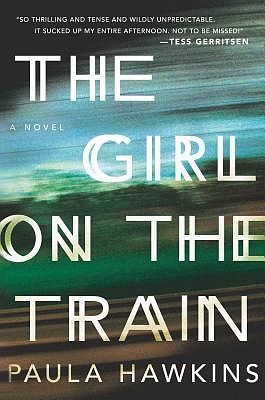- April 25, 2024
-
-
Loading

Loading

Paula Hawkins’ debut psychological thriller, “The Girl on the Train,” has garnered widespread attention and praise. It is every bit as clever, intense and surprising as it has been billed to be, and, for that, Hawkins has earned herself an enthusiastic following.
“The Girl on the Train” is narrated by three women, whose entanglements are revealed as the story progresses. First is Rachel, who is unable to move on from a failed marriage to a man who has started a family with his former mistress. Rachel is a self-described drunk who fixates on a beautiful young couple she observes on her daily train ride from the suburbs into London. Rachel imagines detailed lives for “Jess” and “Jason,” and her fascination with them is exacerbated by the fact that they live in Rachel’s former neighborhood, only a few doors down from Rachel’s ex-husband and his new wife and child.
Hawkins’ second narrator, Megan, is the woman Rachel imagines to be “Jess.” Megan is a young woman with a troubled and complicated past who finds herself unhappily married to Scott, who Rachel imagines to be “Jason.” Megan’s mysterious disappearance is the launching point for the novel, and her narrative passages, which begin in the year before her disappearance, are among the most revealing of the book.
Finally, the third narrator is Anna, the woman who has married Rachel’s ex-husband. Anna is unrepentant about her role in breaking up Rachel’s marriage, and she basks in her new role as wife and mother. Her antagonism toward Rachel is palpable, and her narrative contributions have less to do with Megan’s disappearance than Anna’s desire to be rid of Rachel’s presence in her family’s life.
In Rachel, Hawkins has created a fantastically unreliable narrator whose alcohol-fueled, blackout-filled, downward spiral is central to the story. Unable to recall whether she was involved in Megan’s disappearance, Rachel spends much of the book trying to recover memories and speculating about the motivations and actions of people who are strangers, but whom she imagines she knows intimately.
As Rachel struggles with alcohol and her spotty memories, the circumstances leading up to Megan’s disappearance are gradually revealed through the collective narration of all three women. Hawkins nimbly moves from one time and narrative thread to another and, through these well-drawn characters, crafts a story that is thoroughly suspenseful and memorable.
Top 10 fiction titles at Bookstore1Sarasota for February
“All the Light We Cannot See” by Anthony Doerr
“Orphan Train” by Christina Baker Kline
“My Brilliant Friend” by Elena Ferrante
“The Story of a New Name” by Elena Ferrante
“City of Thieves” by David Benioff
“The Secret History” by Donna Tartt
“An Officer and a Spy” by Robert Harris
“My Struggle: Book 1” by Karl Ove Knausgaard
“The Museum of Innocence” by Orhan Pamuk
“The Nightingale” by Kristin Hannah